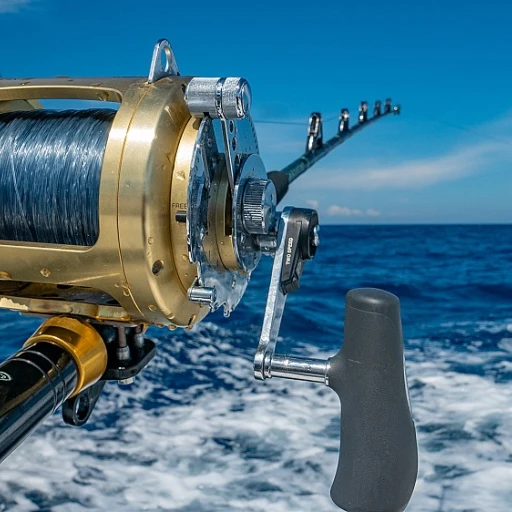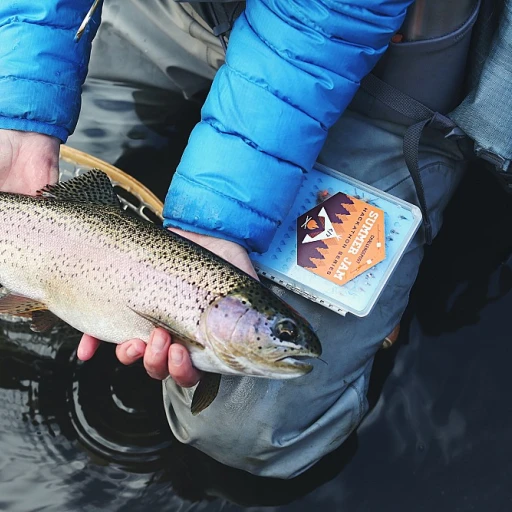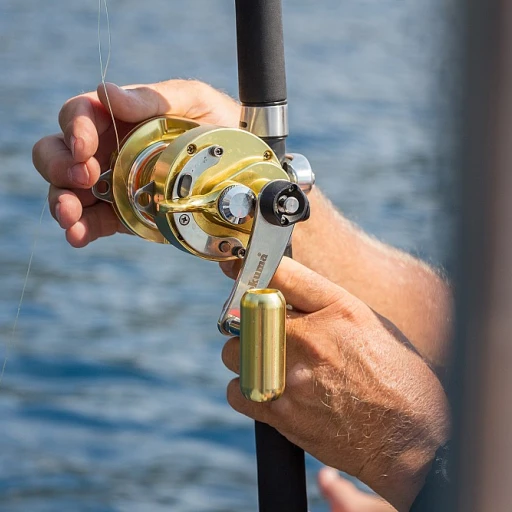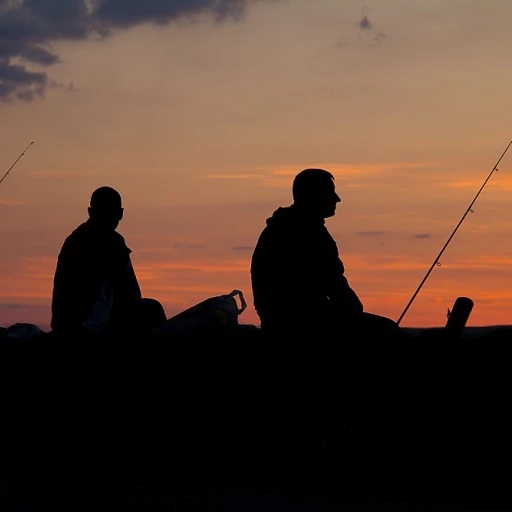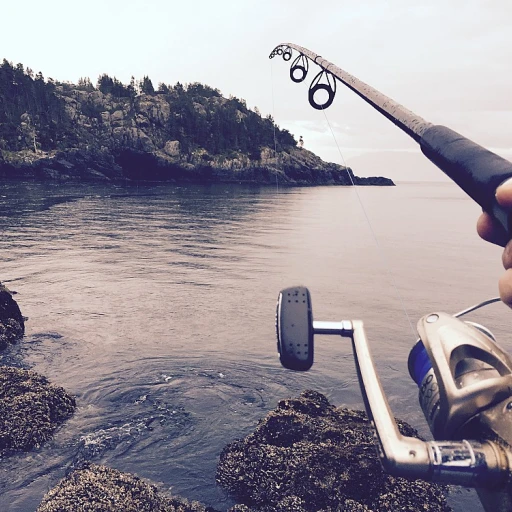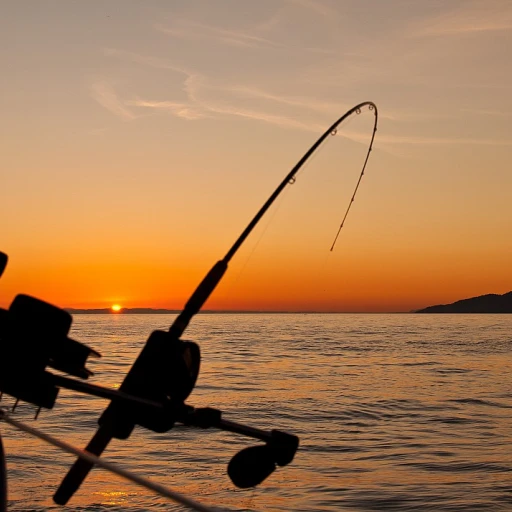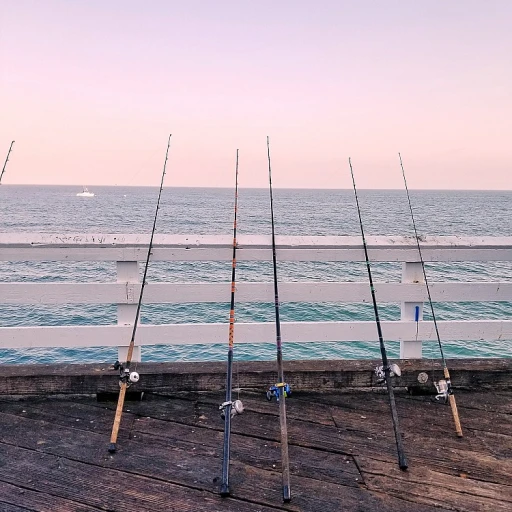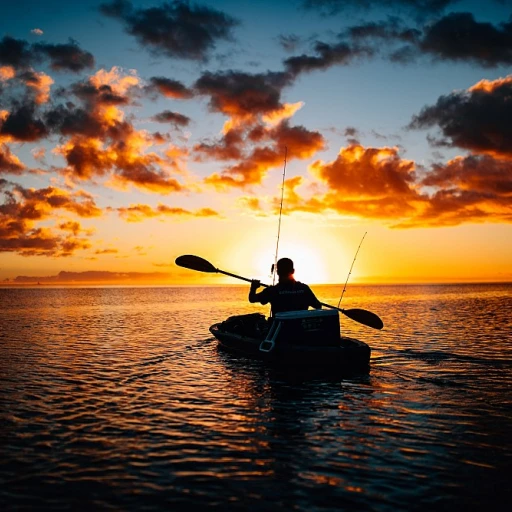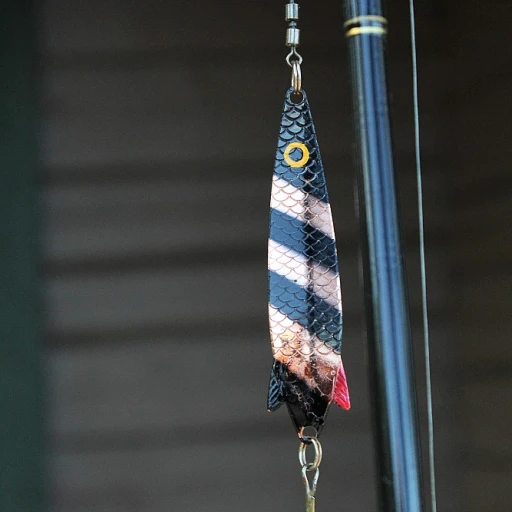
The legendary catch: Isaac Francis and his record-breaking grouper
The Legendary Catch: Isaac Francis and His Record-Breaking Grouper
On May 20, 1961, in the deep waters off Fernandina Beach, Florida, Isaac Francis made history with a catch that sent shockwaves through the fishing community. The Texas native hauled in a gargantuan goliath grouper weighing an astonishing 680 pounds, making it the biggest grouper ever caught. This extraordinary feat remains unrivaled, holding its place firmly in the annals of fishing lore.
Francis, a high school science teacher and avid angler, embarked on what would become an iconic fishing trip with nothing but his trusty rod, a sturdy boat, and an unwavering determination. The moment he hooked the massive fish, it was clear that he was in for the fight of his life. Battling for hours, Francis showcased not just physical strength but an incredible understanding of fish handling techniques to finally reel in the giant grouper.
The record-breaking grouper, recognized by the IGFA (International Game Fish Association), has sparked widespread interest and curiosity. The IGFA is the global authority for record-keeping and verifying world-class catches. This organization ensures that each record, such as Francis's giant grouper, is accurately documented, maintaining the integrity of fishing records across species.
The image of Isaac Francis standing victorious next to his haul, the grouper's enormity dwarfing him, is one of those snapshots of history that sticks with anyone passionate about fishing. The sheer size of the goliath grouper captured not just fish enthusiasts' attention but also brought to light the amazing diversity of grouper species thriving in the Atlantic and Gulf of Mexico waters.
Curious about more incredible catches and iconic angling feats? Check out our detailed look at the goliath grouper record to dive deeper into these legendary stories.
Understanding grouper species: from goliath to Warsaw
A deep dive into the goliath and Warsaw species of grouper
Fish enthusiasts and anglers around the world are fascinated by the enormous, record-breaking catches of groupers – particularly the goliath and Warsaw species. These giant fish are true marvels of the sea, invoking both awe and admiration for their size and strength.
The goliath grouper (Epinephelus itajara), once known as the jewfish, can grow up to incredible sizes. The largest known goliath grouper ever caught tipped the scales at a whopping 680 pounds! This astonishing catch was verified by the International Game Fish Association (IGFA) and showcases the sheer size these fish can achieve.
On the other hand, the Warsaw grouper (Epinephelus nigritus) is no slouch when it comes to breaking records either. The largest Warsaw grouper on record weighed an impressive 436 pounds, caught in the Gulf of Mexico. Like their goliath cousins, these fish are not just large, but are also incredibly strong, making them a challenging but rewarding catch for any angler.
Why these species are so unique
Both the goliath and Warsaw groupers are fascinating not just for their size but for their biological and ecological importance. Goliath groupers are native to the Atlantic Ocean and can be found off the coasts of Florida, Brazil, the Caribbean, and even the coasts of the Gulf of Mexico. They prefer shallow, inshore waters, often inhabiting coral reefs, wrecks, and even mangrove swamps.
Warsaw groupers, on the other hand, inhabit deeper waters, commonly found at depths of 100 to 400 feet. They are more reclusive compared to the goliath grouper and are often found around rocky ledges and underwater structures.
Angler experiences with these colossal fish
Grouper fishing is a thrilling adventure. Many anglers have recounted their experiences with both joy and awe. As an example, Steve Haeusler, a seasoned fisherman, shared his story with Fishing Magazine. He discussed how catching a goliath grouper is like “trying to pull a refrigerator up from the bottom of the ocean,” underscoring the incredible strength of these fish. He also mentioned that proper fish handling techniques are crucial, which ensures that these majestic creatures can be released alive and unharmed back into their natural habitat (source: The Ultimate Guide to Record Muskie).
For those passionate about sport fishing, understanding the differing characteristics and habitats of these giant groupers is essential. The unique challenges and rewards make grouper fishing a favorite among many anglers.
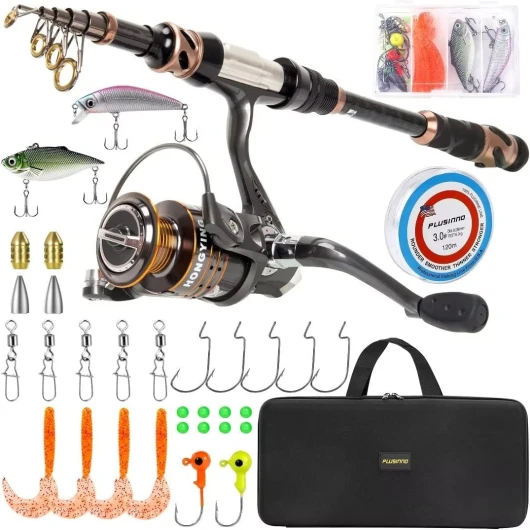
- + Carbon Fiber construction for lightweight and durability
- + Telescopic design for easy transport
- + 12 + 1 Shielded Bearings for smooth operation
- + Stainless Steel BB for rust resistance
- + Includes carrier case for storage
The role of IGFA in recording and verifying catches
Recording and verifying historical fish catches
When it comes to confirming world-record catches like Isaac Francis' legendary grouper, the International Game Fish Association (IGFA) plays a critical role. Founded in 1939, the IGFA is a global authority on sport fishing and closely monitors both freshwater and saltwater fishing records.
One of the key responsibilities of the IGFA is to establish and maintain uniform angling rules and regulations. They have a meticulous process in place to verify every potential fishing record. Interested anglers must submit detailed documentation, including photographs, witness statements, and precise length and girth measurements.
The meticulous verification process
Upon receiving a claim, the IGFA's Record Committee thoroughly reviews the submission. This includes scrutinizing every minute detail to ensure that the angler adhered to the IGFA's rules, which are crucial to maintaining the integrity of the records. According to the IGFA, the largest grouper ever caught weighed in at an astonishing 680 pounds. This monster fish was what gave Isaac Francis his claim to fame, and every tiny aspect of his catch had to match up to meticulous standards set by the IGFA.
Steve Haeusler, a well-known expert in the recreational fishing community, emphasizes, “The IGFA doesn’t just take someone’s word for it. They dissect the details to confirm the legitimacy of record-breaking catches. It's what keeps the sport honest and the records fair.”
A case of global oversight
The IGFA isn’t limited to one part of the world; their jurisdiction covers the globe. From Pacific waters off the coast of Japan to the Atlantic waters by Florida, the IGFA has verified catches in diverse locations. Goliath groupers, known for their enormous size, are frequently the subject of these record validations, particularly in warm waters like those of Florida and the Gulf of Mexico.
For those who might be skeptical, it’s worth noting that the IGFA's comprehensive verification process ensures that no stone is left unturned. Lynn Joyner, a marine biologist, acknowledges the importance of the IGFA's oversight in fisheries. “Without the rigorous standards imposed by the IGFA, sport fishing records wouldn't carry the same weight,” she says.
If you’re fascinated by record-breaking fish catches, don’t miss out on the detailed stories behind the biggest striped bass ever caught. It’s truly amazing to see how these remarkable catches come about.
Expert insights: Steve Haeusler on grouper fishing
Steve Haeusler's expertise on catching groupers
Steve Haeusler, an acknowledged fishing guru and instructor, has unparalleled experience when it comes to reeling in massive groupers. His insights into grouper fishing can transform the way anglers approach and appreciate the sport. Steve often emphasizes a few key strategies that make a world of difference.
Mastering the gear: rods, reels, and lines
According to Haeusler, the right gear is essential. For instance, using a heavy-duty rod and reel designed to handle the immense power and size of groupers is crucial. He recommends rods ranging from 50 to 130 pounds and reels capable of high drag settings. Quality braided lines, such as PowerPro, with a test strength of 80 pounds or more, are also a must for these giant fish.
Choosing the perfect bait
Haeusler explains that live bait is often the best choice for catching groupers. Popular options include pinfish, grunts, and blue runners. The bait should be hearty and active, making it irresistible to the hungry grouper lurking beneath. Many seasoned anglers swear by using whole bonito, a bait that has proven to be highly effective in luring large groupers.
Importance of fishing spots and depths
Location plays a major role in successful grouper fishing. Haeusler mentions that rocky outcrops, reefs, and ledges are prime spots where groupers tend to hide. These fish are often found in depths ranging from 60 to 300 feet. For those fishing in the Gulf of Mexico or off the coast of Florida, targeting these depths with pinpoint accuracy can lead to record-breaking catches.
Timing and patience: keys to success
Patience is vital when fishing for groupers, says Haeusler. He stresses that most of his notable catches came after hours of waiting and persistently dropping the bait. Understanding the feeding patterns of groupers, which tend to be more active during dawn and dusk, can greatly increase chances of success.
Real-life experience: Steve Haeusler's monster catch
One of Haeusler's most memorable catches involved battling a 680-pound goliath grouper off the coast of Florida. Armed with his tried-and-tested techniques, he managed to hook this colossal fish and bring it to the surface after a grueling two-hour fight. This particular catch not only underscored the importance of preparation and patience but also highlighted the thrill of the sport.
Incorporating Steve Haeusler's expert advice, anglers can significantly improve their success rates when hunting for the biggest fish ever caught. With the right gear, the perfect bait, strategic locations, and a whole lot of patience, it's only a matter of time before another record-breaking grouper is landed.
Case study: the giant grouper caught off Fernandina Beach
The catch of a lifetime
Isaac Francis is not just any angler; he's a legend in the world of sport fishing. When people talk about the biggest grouper ever caught, they inevitably bring up his name. On a fateful day off Fernandina Beach, Florida, Isaac hooked a gargantuan grouper that would forever etch his name in the annals of fishing history. The giant grouper Isaac reeled in weighed an astonishing 680 pounds. To put that in perspective, that's more than three times the weight of an average adult human. This record-breaking catch was confirmed by the International Game Fish Association (IGFA), an authority well-respected in the field of fishing. Isaac's grouper wasn't just any ordinary fish; it was a true behemoth, dwarfing what many thought was possible. This incredible feat required immense strength, patience, and the right gear. Isaac, an experienced angler who graduated from Riverview High School, used top-notch fishing tackle to secure his catch. He also adhered to proper fish handling techniques, ensuring that the giant was kept alive and unharmed throughout the catch, a principle he strongly believes in. But Isaac's feat is more than just about setting records; it's also an inspiration to many anglers around the globe, including students in wildlife conservation programs who look up to him. The excitement surrounding his catch continues to captivate the fishing community, serving as a motivational tale of perseverance and skill. In discussions across fishing forums and social media groups, Isaac Francis and his legendary catch frequently come up, with enthusiasts comparing their own experiences and sharing advice. His story not only highlights the potential of Florida's waters but also emphasizes the importance of sustainable fishing practices and conservation efforts, aligning with principles advocated by bodies like the Florida Fish and Wildlife Conservation Commission. Isaac's success story continues to be a hallmark for youngsters and seasoned anglers alike, reinforcing the idea that dreams and records are there to be chased. Whether you're planning your next fishing trip in hopes of breaking a record or just enjoying the sport, Isaac's legacy serves as a powerful reminder of what's possible.Proper fish handling techniques: keeping catches alive and unharmed
Handling behemoth fish: tips for keeping your massive catch alive and unharmed
When you're fortunate enough to land a giant, such as a goliath grouper, it's not just size that matters – proper handling is crucial. Florida's Wildlife Conservation Commission (FWC) emphasizes that not all fish should be taken out of water, especially large specimens, and this applies to species like Atlantic goliath groupers. Mishandling can cause injuries or even death, affecting fish populations long-term.Hoisting with care: minimize stress and injury
According to experts, the primary goal is to minimize out-of-water time. Using a strong, adequately-sized landing net or sling is recommended. Lynn Joyner, a veteran angler, suggests, "When lifting a goliath or Warsaw grouper, always support the body weight – don’t just hang them by the jaw. This reduces internal injury and stress." An angler from Riverview High School shared, "We always use the right gear to avoid harming the fish."Proper equipment and swift handling
Steve Haeusler, a seasoned fisher from Fernandina Beach, advocated for releasing methods that support the fish's weight evenly. Modern fishing tools like barbless hooks or circle hooks lessen harm, aiding a quicker release. Using dehooking tools and wetting your hands before handling can also prevent scales and protective slime from being scraped off.Revive before release
Once caught, large species like goliath groupers may need reviving before release. This involves holding the fish upright in water, ensuring it faces the current, and moving it back and forth gently to facilitate water flow over the gills. “This process helps them recuperate and swim away strong,” notes Isaac Francis, who set records with his giant catch.Regulations and ethical catch practices
Florida's FWC regulations require that goliath groupers be released unharmed immediately. These rules, backed by research, help maintain fish populations. Following such guidelines isn't just about legality; it’s a sign of respect to the sport and the incredible creatures we pursue.The impact of goliath grouper harvest bans in Florida
Strains of conservation: why Florida's goliath grouper harvest bans matter
Florida has put in place some serious protective measures to preserve the goliath grouper (Epinephelus itajara). Overfishing and habitat loss prompted the Florida Fish and Wildlife Conservation Commission (FWC) to impose a harvest ban on these giants back in 1990. The ban has been extended multiple times, earning a fair share of both praise and criticism.
The goliath grouper, one of the largest groupers out there, can grow upwards of 8 feet and weigh as much as 800 pounds. This makes them a prime target for sport fishermen. However, their slow growth rate and late sexual maturity put them at significant risk if overfished. By enforcing a harvest ban, the FWC aimed to give the population a chance to rebound.
Conservation victories and ongoing challenges
Thanks to the bans, goliath groupers have started to make a noticeable recovery. Studies show that their numbers in Florida waters have significantly increased over the years. For instance, a study from the University of Florida in 2016 noted a 20-fold increase in the goliath grouper population since the 1990 ban was first implemented (source: ScienceDirect).
Despite the success, there are still hurdles to clear. Anglers and commercial fishermen argue that the goliath grouper is so abundant that it’s now negatively impacting other fish species. There's a push to lift or at least modify the ban, which remains a hotly debated issue. The FWC has held numerous discussions about opening a limited harvest season, but so far, the ban remains.
Expert opinions: balancing sport and conservation
Experts like Steve Haeusler contend that a balanced approach is needed. 'We need to respect what the bans have achieved but also recognize the changing ecosystem,' says Haeusler, a renowned marine biologist who has extensively studied grouper populations.
Proper fish handling techniques, such as those covered in other parts of this article, play a crucial role in maintaining the health and numbers of these massive creatures. Anglers are urged to release catches alive and unharmed, ensuring that the ecosystem remains balanced and future generations can enjoy the thrill of grouper fishing.
Looking ahead: sustainable fishing for future generations
The future of grouper fishing in Florida may hinge on sustainable practices and respectful coexistence with nature. Whether the bans will be lifted remains uncertain, but one thing is clear: the conservation efforts for goliath groupers have set a precedent for marine wildlife protection. As the population continues to grow, ongoing research and dialogue will be vital to making informed decisions about their management.
Trends and future outlook for grouper fishing
Emerging technologies in sport fishing
The world of grouper fishing changes just like any other sport. With new tech and evolving techniques, anglers now have more tools than ever.
For example, advancements in fish-finding sonar technology have revolutionized how anglers locate grouper habitats. Brands like Garmin and Humminbird have developed sonar systems with greater depth and clarity, enabling anglers to pinpoint the exact locations of groupers more accurately.
Another exciting advancement is the use of robotic fishing lures. These lures mimic the movements of live bait better than ever before, making them highly effective for attracting large groupers. Researchers from the University of Illinois have conducted extensive studies showing a significant increase in catch rates when these robotic lures are used.
Sustainable fishing practices
Many anglers focus on sustainability. Different organizations, including the Florida Fish and Wildlife Conservation Commission (FWC), work hard to make sure fish populations stay healthy. For instance, the FWC’s initiative to enforce proper fish handling techniques helps keep fish alive and unharmed when they are released back into the water.
An angler Isaac Francis highlights the importance of these techniques, especially given his own experiences with record-breaking catches. Proper fish handling ensures that catches like the gigantic grouper he landed remain sustainable.
A younger generation of anglers
Younger anglers are bringing fresh ideas to the sport. Riverview High School, for example, has a successful fishing team that encourages students to engage in recreational fishing. Upswept by role models like Isaac Francis, these students learn the art and science of respectful and effective angling.
Supporting this trend are companies like Google LLC which sponsor educational programs aimed at inspiring younger anglers. They provide them with the knowledge and tools needed to fish responsibly while still enjoying the thrill of the catch.
The future of grouper fishing
Looking forward, the future of grouper fishing seems bright but challenging. The balance of innovation and conservation will determine the sport’s direction. Anglers will likely see more stringent regulations, similar to the recent bans on goliath grouper harvest in Florida, aimed at preserving grouper populations.
Steve Haeusler, a seasoned angler and expert, says, “The heart of the sport lies not just in the thrill of the catch, but in the commitment to conservation. We must ensure that our love for fishing aligns with efforts to protect these magnificent creatures for future generations.”

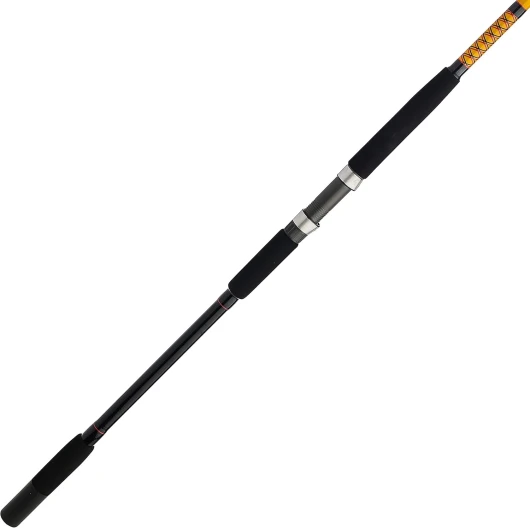
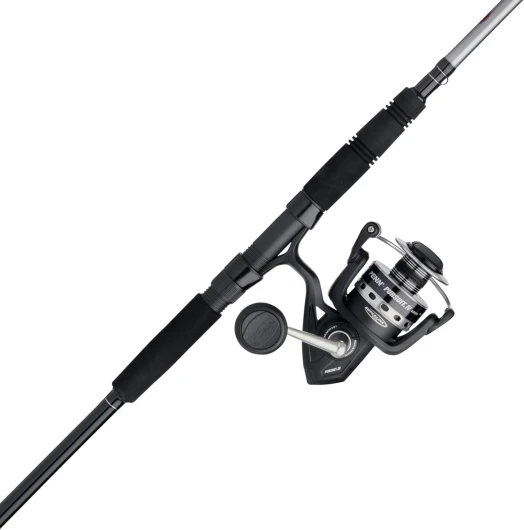
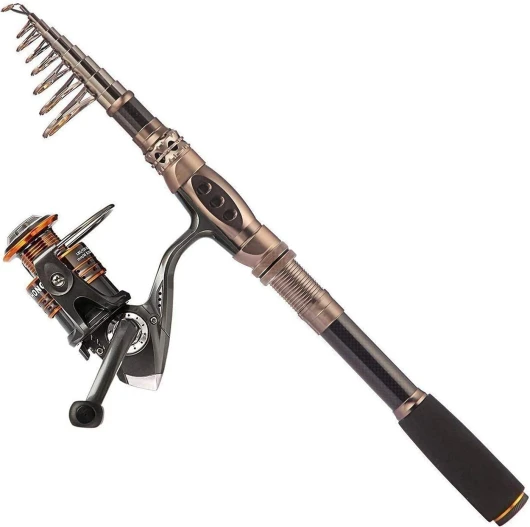
-large-full.webp)


